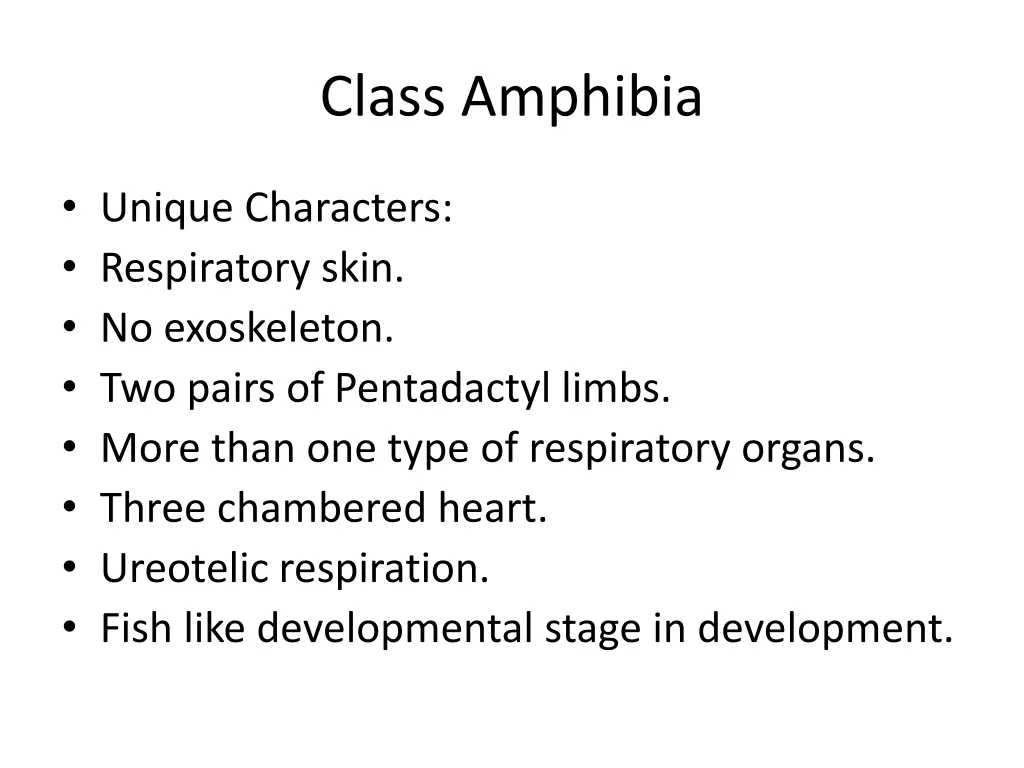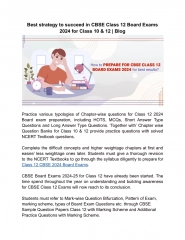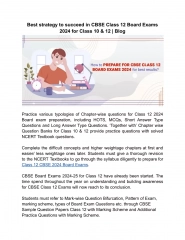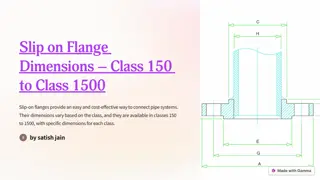
Amphibia Unique Characteristics and Classifications
"Explore the unique features and classifications of the class Amphibia, including sub-classes Apoda, Urodela, and Anura. Learn about their respiratory systems, skin structures, limbs, heart, and developmental stages. Discover fascinating examples like caecilians, salamanders, and more in this in-depth overview of amphibians."
Download Presentation

Please find below an Image/Link to download the presentation.
The content on the website is provided AS IS for your information and personal use only. It may not be sold, licensed, or shared on other websites without obtaining consent from the author. If you encounter any issues during the download, it is possible that the publisher has removed the file from their server.
You are allowed to download the files provided on this website for personal or commercial use, subject to the condition that they are used lawfully. All files are the property of their respective owners.
The content on the website is provided AS IS for your information and personal use only. It may not be sold, licensed, or shared on other websites without obtaining consent from the author.
E N D
Presentation Transcript
Class Amphibia Unique Characters: Respiratory skin. No exoskeleton. Two pairs of Pentadactyl limbs. More than one type of respiratory organs. Three chambered heart. Ureotelic respiration. Fish like developmental stage in development.
Classification sub class Apoda Characters Sub- class Urodela sub-class Anura Skin Dermal scales embedded in the skin Scale less . It may be warty. Scale less . It may be warty. Limbs and girdles Absent Both pairs of limbs are weakly developed and nearly equal sized Hind limbs are much longer than forelimbs for leaping . Tail Absent Tail present with tail fin , help s in locomotion . Tailless Amphibians. Vertebrae Numerous(20 0)Amphicoelo us. Numerous(90 )opisthocoelo us Only 9 ,procoelous
Sub- class Apoda It includes worm like amphibians commonly called caecilians. These have ring like grooves on body surface. Have non functional eyes, teeth in both jaws, persistent notochord, long and floating ribs,copulatory organs in male , internal fertilisation,oviparity. In some caecilians female coils around eggs to protect them.Ichthyophis
Sub-class Urodela Uros-tail These are tailed amphibians. Have small sized functional eyes, teeth on both jaws,long nd floating ribs, internal fertilisation,oviparity. Larval forms of urodeles e.g. Ambystoma tiger salamander shows neoteny . i.e donot undergo metamorphosis , develop gonoads,start breeding like adults. This larva is known as Axolotal larva.
Orders of Sub -class Urodela Characters O. Perennibranchiata O. Caducibranchiata Gills and gill-slits Persist in adult. Lost in adult. Tail with tail fin. Without tail fin. Examples Necturus, siren Amphiuma, Ambystoma, Salamandera
Sub class Anura (Salientia) To leap It includes tail less amphibians. Have large sized eyes, teeth only on upper jaw, reduced ribs, external fertilisation,oviparity, Development includes fish like tadpole larva which undergoes metamorphosis.
Orders of Sub-class Anura Characters O. Aglossa(tongue) O. Phaneroglossa Tongue Absent Present and well developed. Eustachian tube open in pharynx by common aperture Open in pharynx by separate aperture Examples Pipa, Xenopus Common frog, toad






















